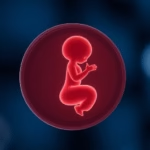Is Red Light Safe for Pregnancy?
Today we will be talking about the safety of red light therapy during pregnancy. Red light therapy (RLT) is a treatment that uses low wavelengths of red light to treat various conditions. It has gained popularity in recent years for its potential benefits related to skin health, pain relief, and even healing processes. However, the use of this therapy during pregnancy raises questions and concerns for many expectant mothers. Understanding whether red light therapy is safe for pregnant women requires insight into both the therapy itself and the biological changes that occur during pregnancy. In this article, we will explore the efficacy, safety, and guidelines surrounding the use of red light therapy in pregnant women, allowing you to make an informed decision for you and your baby.
1. What is Red Light Therapy?
Red Light Therapy (RLT) entails the exposure of the skin to low-wavelength red light. The light penetrates the skin and offers therapeutic benefits by promoting cellular repair and regeneration. The key point of this therapy is its ability to stimulate the mitochondria within cells, leading to improved energy production, inflammation reduction, and enhanced wound healing. RLT has been used for a variety of conditions, including skin disorders, joint pain, and muscle recovery. It operates on a cellular level, and many users report positive effects such as improved skin tone and decreased discomfort, making it an appealing option for individuals looking for natural remedies. However, the safety of utilizing this treatment during pregnancy requires thoughtful consideration, as hormonal changes can impact both the efficacy of the therapy and the health of the pregnancy.
2. Understanding the Benefits of Red Light Therapy
Red Light Therapy has shown promising potential benefits across various medical fields. Primarily, it is known for its ability to promote healing, reduce inflammation, and enhance tissue repair. For pregnant women, this could be appealing in addressing common discomforts like back pain or skin changes. The non-invasive nature of RLT, coupled with its efforts to soothe and promote wellness, makes it attractive. However, a pregnant woman’s changing body also comes with unique challenges, and thus, any potential use of RLT must be understood within this context. Effective communication with healthcare providers is critical to understand the appropriateness of RLT based on individual pregnancy experiences. Pregnant women may also be seeking ways to alleviate discomfort naturally. While RLT sounds advantageous, understanding the intricacies of how it works is essential to regulatory or clinical applications.
3. Is Red Light Therapy Safe during Pregnancy?
The question of whether Red Light Therapy is safe during pregnancy is multifaceted. While RLT is generally considered safe for various groups of people, due diligence must be performed when it comes to expectant mothers. The main considerations involve the lack of extensive research in human trials specifically focusing on pregnant women and the physiological changes occurring during pregnancy. Since pregnancy is a critical time for both mother and fetus, special care must be taken to avoid exposing the fetus to any potential risks. The wavelengths used in RLT are non-ionizing, which means they do not carry the same risks as ionizing radiation treatments. Nevertheless, it is essential to consult with a healthcare provider before pursuing any treatment to ensure it aligns with individual health conditions and pregnancy status.
4. Research and Studies on Red Light Therapy and Pregnancy
Scientific literature exploring the impact of Red Light Therapy on pregnancy is limited. Most available studies focus on the general effects of RLT on skin and pain management. However, some research does indicate potential benefits of RLT on promoting healthy tissue growth and reducing inflammation, which could be beneficial during pregnancy for conditions such as stretch marks or joint pain. As with any medical therapy, further studies specifically addressing RLT’s effects during pregnancy are needed to gather comprehensive data on safety and efficacy. Until credible evidence is published, expectant mothers should approach RLT with caution and consult healthcare providers for appropriate methodologies in managing their pregnancy-related challenges. It may be worthwhile to consider alternative therapies with well-documented safety in pregnancy if necessary.
5. Guidelines for Using Red Light Therapy during Pregnancy
If a pregnant woman is considering Red Light Therapy, several guidelines should be followed to ensure safety. Firstly, engaging with healthcare professionals who are well-versed in both RLT and pregnancy is crucial. They can provide personalized advice tailored to each individual’s pregnancy journey. Secondly, if RLT is deemed appropriate, it should be used under supervised conditions, perhaps in a clinical setting rather than at home. Thirdly, women should monitor their bodies for any unusual reactions, as hormonal or physical changes can affect how the body responds to treatments. Finally, a supportive approach, combining RLT with other safe practices, such as moderate exercise, hydration, and nutrient-rich diets, can be beneficial for overall wellness in pregnancy. Therefore, confirming with a qualified provider ensures that individual health and safety are prioritized throughout the treatment process.
6. Potential Risks of Red Light Therapy during Pregnancy
Red Light Therapy is relatively safe, but potential risks do exist, particularly during pregnancy. Critically, since pregnant women experience significant physiological changes, there’s a chance of heightened sensitivity to treatments. This can lead to skin irritation, discomfort, or unexpected reactions. RLT does not penetrate deeply into the skin, but concerns about stimulating the skin’s receptors and resulting inflammatory responses during pregnancy should be monitored closely. Furthermore, there is a theoretical risk of affecting fetal development if wavelengths are intensely directed toward the abdominal area. Dose adjustment, device settings, and duration must be meticulously managed to ensure utmost care. Always communicate potential risks with a healthcare provider to make informed decisions regarding any type of therapy during pregnancy.
7. Alternatives to Red Light Therapy for Pregnant Women
For expectant mothers seeking alternatives to Red Light Therapy for pain relief and skin enhancement, plenty of safe options exist. Gentle prenatal massage can address soreness and discomfort, while topical skin care treatments designed specifically for pregnancy are widely available. Regular exercise, in allowable forms like prenatal yoga or walking, aids in managing many common pregnancy issues, including swelling and back pain. Additionally, hydration and proper nutrition contribute positively to skin health and overall physiological well-being. Various relaxation techniques, such as breathing exercises, meditation, or warm baths, can also alleviate stress and discomfort without any treatment. Making lifestyle adjustments during pregnancy is essential and women are encouraged to explore these alternatives with healthcare professionals for safe, effective strategies to promote health and wellness.
8. Expert Opinions on Red Light Therapy and Pregnancy
Expert opinions on the use of Red Light Therapy during pregnancy vary. Some practitioners advocate for the therapy due to its non-invasive nature and potential benefits; they emphasize the importance of caution and individualized assessments. Others express concern about the lack of substantial research studies focusing exclusively on pregnant subjects. It’s crucial for expectant mothers to leverage the expertise of medical professionals, including obstetricians and other health specialists, to make informed decisions regarding RLT. This constructive dialogue allows for shared knowledge on safe practices and provides an opportunity for women to voice their health concerns during pregnancy. Expert guidance is vital in navigating treatment modalities, and informed dialogue helps each woman feel empowered in her own pregnancy journey.
9. Personal Experiences and Testimonials
Personal experiences and testimonials regarding Red Light Therapy during pregnancy highlight a spectrum of opinions. Some women report positive outcomes, such as enhanced energy levels and relief from mild surface issues like stretch marks or skin irritations. Conversely, others express hesitance, voicing concerns about the unknown impacts on their pregnancy. Anecdotal evidence serves as a reminder that individual responses can differ widely based on unique health conditions, lifestyle factors, and pregnancy experiences. Personal research and feedback from other pregnant women can add context, yet it’s important that every individual considers their own circumstances and consults qualified healthcare professionals. Personal experiences can illuminate the therapeutic landscape, but clinical guidance remains paramount.
10. Final Thoughts on Red Light Therapy for Pregnant Women
The relationship between Red Light Therapy and pregnancy remains an area of curiosity and examination. As with many alternative therapies, understanding the broader implications on health and well-being throughout pregnancy is complex. The potential benefits of RLT must be carefully weighed against the lack of definitive scientific research in this particular domain. Pregnant women are encouraged to tread cautiously, prioritize safety, consult healthcare professionals, and explore a comprehensive range of options available to support their health. Each pregnancy is unique, and well-informed decisions will pave the way for positive experiences and outcomes.
Conclusion
In conclusion, Red Light Therapy holds promise across many therapeutic areas. Its application during pregnancy, however, requires careful consideration given the absence of extensive research focused specifically on pregnant women. While many anecdotal accounts suggest benefits, safety remains the overarching priority during this delicate time. Engaging in clear dialogue with healthcare providers is imperative for pregnant women considering RLT. The ability to assess individual health conditions and address specific concerns with knowledgeable professionals can significantly influence safety outcomes. Furthermore, exploring a spectrum of alternatives ensures that expectant mothers can navigate their wellness journeys effectively without undue risk associated with unknowns such as RLT. Choose therapies that align with your health needs and always prioritize consultations with qualified medical experts to safeguard the health of both mother and baby. Ultimately, understanding the multifaceted elements of Red Light Therapy will empower pregnant women to make informed choices aligned with their personal pregnancy journeys.
Frequently Asked Questions
1. Can red light therapy help with pregnancy-related back pain?
Yes, some people report that red light therapy can help alleviate back pain during pregnancy. However, it’s important to consult with a healthcare professional before trying any new treatment.
2. Is red light therapy safe for my baby?
There is no extensive research specifically addressing the safety of red light therapy for babies during pregnancy. It’s crucial to consult with a healthcare provider.
3. How deep does red light therapy penetrate the skin?
Red light therapy typically penetrates the skin to a depth of about 8-10 millimeters, stimulating cellular processes in the tissue; however, it does not reach internal organs.
4. How long should I use red light therapy?
The duration and frequency of red light therapy sessions can vary. Generally, sessions last between 10-20 minutes, but always follow the guidance of a healthcare provider.
5. Are there alternatives to red light therapy that are safe during pregnancy?
Yes, options such as prenatal massage, gentle exercise, topical skincare, and relaxation techniques are safe alternatives that can help manage discomfort during pregnancy.
Further Reading
3.5 tog sleeping bag temperature guide
What Type of Psychotherapy Is Best for Anxiety?







